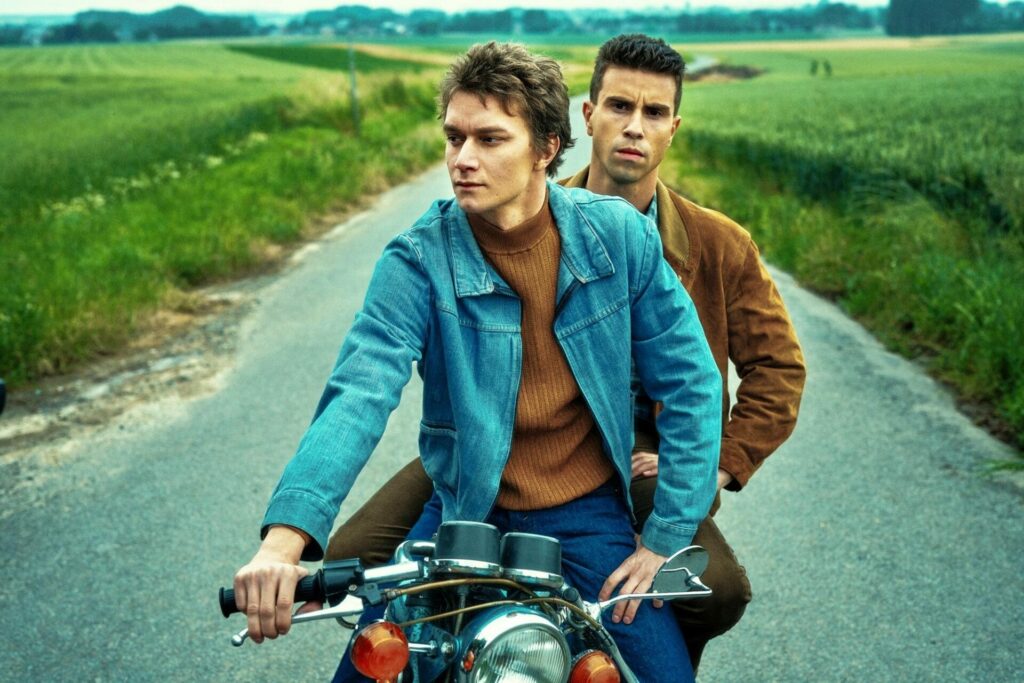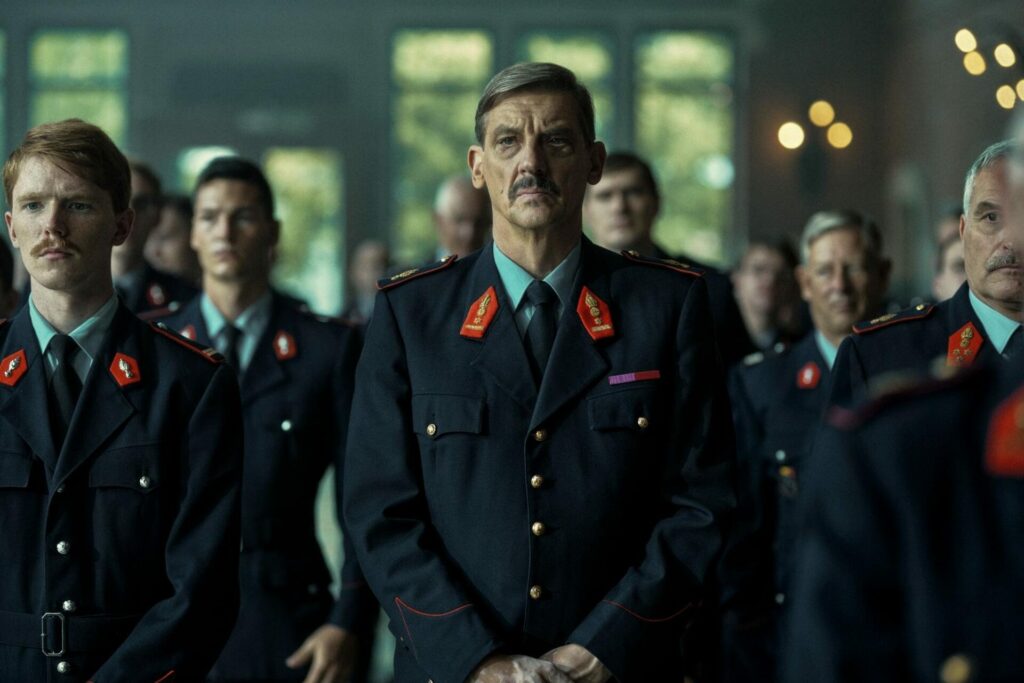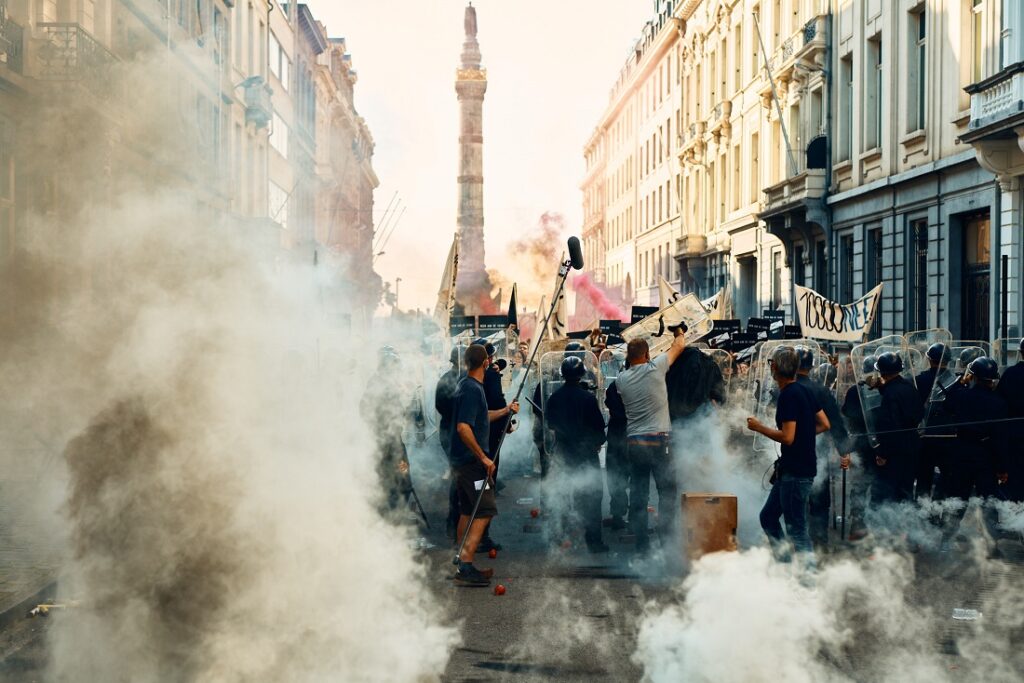In Belgium’s decadent but turbulent 1980s, a mysterious gang of criminals showed up out of the blue to commit a series of murders and violent robberies across the country. Dubbed the Brabant Killers by the press, (les Tueurs du Brabant in French, de Bende van Nijvel in Dutch), they killed 28 people, including children, and injured over 40. And then they abruptly disappeared.
Who were they? Nobody seems to know.
To this day, no members of the gang have been caught and convicted – or even identified. Their motives are also unknown, with the initial police investigation into the case widely criticised for being chaotic and careless.
As with many unresolved cases, theories about who the gang members were and what they were after took on almost mythical proportions, ranging from corrupt police officers to ordinary criminals out for a quick buck, and from extreme-right terrorists to foreign governments running interference to disguise targeted assassinations. Nearly 40 years later, the entire case is still shrouded in so much mystery that the killers might as well have been a gang of vampires.
The absence of verified information, however, has not stopped Belgian creatives from using the Brabant Killers case to tell their own stories.
The latest one is 1985, an eight-part television series created by screenwriter Willem Wallyn and director Wouter Bouvijn. The story follows Marc and Franky, two close friends who start a career with the Gendarmerie, Belgium's now-dissolved national military-based police force, and Franky’s sister Vicky, who decides to study law at the Brussels university, VUB. By chance or choice, all three are connected to the gang.
“For many, the Brabant Killers seem like a myth, a far-fetched story full of conspiracy theories, ‘gangsters who were probably sent from above,’ cover-up operations and corruption among the Gendarmerie,” Bouvijn says. “Everything to do with it is still so vague. Our story does not have a monopoly on the truth, but I do think it is still very relevant to what is still happening today between the political left and right and with extremist groups. Because despite the general lack of information, one thing that was very clear is that the Brabant Killers were definitely an extremist group.”
Shot from the point of view of Marc, Franky and Vicky, the series captures the atmosphere of the time. “You learn a lot about the facts along the way, but the fact that the series is not purely about the Brabant Killers is what makes it very rich: it is about these people's personal world and how they deal with an increasingly polarised world. We used a small story to tell a very big one,” Bouvijn says.
There is also the context of the era, which offers vivid production challenges. Bouvijn says the 1980s, with their wind-up cassette tapes, vinyl, bright colours and pop music are “a period known for its own kind of exotic and nostalgic beauty.”
True fiction
As much of the story remains clouded in mystery, the series cannot be classified as true crime – but the crimes shown are still real. Wallyn based his script on the report of the parliamentary investigation committee that looked into the Brabant Killers – where historical figures such as Madani ‘Dany’ Bouhouche and Robert Beijer are mentioned.
“So yes, it is a fictitious television show, but we are reporting the facts more or less as they happened,” Bouvijn says. “It was never proven that Bouhouche and Beijer were part of the Brabant Killers, but it was strongly suspected, and they were convicted for other offences around the same time.”
Unease and unrest grew during the turbulent four-year period from 1981 to 1985 as many people were killed seemingly at random, and sometimes even in broad daylight. A series of bloody robberies of Delhaize supermarkets, in which several men, women and children were hurt or killed, particularly shocked the country (in one scene, a character says after an attack that they won’t shop in Delhaize again – an accurate reflection of the mood at the time).

Scene from the series 1985
The last known attack occurred in the winter of 1985 when a robbery of a Delhaize store in the Flemish city Aalst resulted in eight deaths, making it the bloodiest attack officially attributed to the Brabant Killers. After that, the gang abruptly ceased their activities, seemingly disappearing into thin air.
What were their motives? The takings from the robberies were so small that it is assumed (some of) the victims were deliberately targeted. In the final raid on the Aalst Delhaize, for example, the total loot amounted to just 200,000 Belgian francs (roughly €5,000) and some cheques were later fished out of the Brussels-Charleroi Canal. A high death toll and a relatively meagre loot haul might suggest an organisation with political motives enjoying protection from higher-up. However, no solid evidence has yet been found to support this theory.
However, Belgium was in turmoil at that time. Another secret, armed group was on the rampage: the Communist Combatant Cells (CCC), urban guerrillas who bombed places such as the NATO headquarters and international businesses. The so-called Haemers Gang carried out many violent robberies on cash transports and later even abducted then-Prime Minister Patrick Vanden Boeynants. “The criminal underworld was quite active in the 80s,” Bouvijn says.
This all led to an atmosphere of fear and loathing, and the sense of ever-present threats looming just out of reach – and the series recreates this mood of unease and mystery. “We never show who is behind the masks, except for that one very crucial time, because that is what our story is about,” Bouvijn says.
Wrong turns
While 1985 takes place against a backdrop of political and societal unrest, the series is also a story about two friends who grow apart because of the choices they make. “For me, no one is the bad guy in the story. One makes better choices because of his upbringing, the other makes the wrong ones because he craves the affirmation and fatherly love that he has missed in his childhood,” Bouvijn says.
On that front, the creators wanted to explore what causes people to take the wrong turn into, say, terrorism or drugs. “How do you get to a point where you really start doing the wrong things?” Bouvijn says. “Or in words that are more recently applicable: who are all those guys storming the US Capitol, and how did they get there?”
Indeed, while the series gives viewers a window into a very specific period almost four decades ago, it’s impossible to miss the current similarities – something that Bouvijn acknowledges.

From 1985
“Pretty early on in making it, we noticed how much it still resonates with today’s reality,” he says. “There are still groups of people who go shoot guns together in the woods, the extreme right is still a danger. Everything that has 'extreme' in front of it is a danger, in my opinion. And if you see that now, like in the 80s, there is a war raging – this time much closer to home because of some fool in Russia – I do not think things have changed all that much.”
It is all too easy to assume that the world today is calmer, safer and more organised, Bouvijn says. “We hope, or we are naive enough to think, that ‘the machine’ works better for us now, but I think we knew it was going to resonate – or at least start a discussion about what's going on today.”
The fact that it still echoes so much, Bouvijn thinks, is also one of the reasons why the story, which is a very Belgian one, has been widely praised abroad: the series garnered international attention after its premiere at CannesSeries – before it even aired in Belgium. Now, 1985 can also be watched on Canal+, making it available to a wider European audience.
“At the premiere, we noticed that people were outraged about how those things could happen, especially because of the real newsreel footage we show at the end of the episodes,” he says, “but I think it is mainly to do with the fact that it is a story about growing up, and about love.”
Typically Belgian
While Bouvijn acknowledges that the story of the Brabant Killers has a quintessential Belgian aspect to it, he underlines that it could happen anywhere. “If you look at history, there were extremist groups in a lot of places. You don’t even have to go far, just look at Italy, Ireland...The biggest difference is that the attacks in Belgium were never claimed by anyone,” he says.
The production was also very Belgian, a collaboration between the Flemish and Walloon public broadcasters: the shooting took place in all three regions and featured both French and Dutch-speaking actors.

Scene from Brussels
“Co-productions always make things more complicated,” Bouvijn says. “But in this case, it is very interesting because the production reflects the core of the story: it is not just Flemish, Walloon or Brussels – it is Belgian through and through. It was a blessing to be able to make this with the two public channels and the two language areas in our country - I can finally work with Walloon and Brussels actors.”
Bouvijn found it especially interesting to get to know people working across the language border. “Despite the fact that Belgium is a small country, we do not know each other so well,” he says. “But that's starting to change a bit, partly because of what we have done now with 1985. I hope these kinds of collaborations happen even more – as long as the stories are relevant to the country.”
Even if most of the viewers weren’t born when the events of the series took place, the Brabant Killers still left a mark on the country, Bouvijn says. “The story is something that we, as a country, are going to take with us for a long time,” he says. “Hopefully, the generations after us will look at the series and gain a bit of insight into a very complicated period. In 20 years, it will look even more exotic than it does now. It would be very cool if it became a permanent item in people's development.”
The colourful characters in the series have helped drive its success, but Bouvijn says it asks deeper questions about how it could have happened. “Everyone can identify with either Marc, Franky or Vicky. And then on top of that, you get an interesting insight into one of the darkest periods we have known in our country,” Bouvijn explains. “Not that this subject is particularly good advertising, but it does put little Belgium on the map.”

